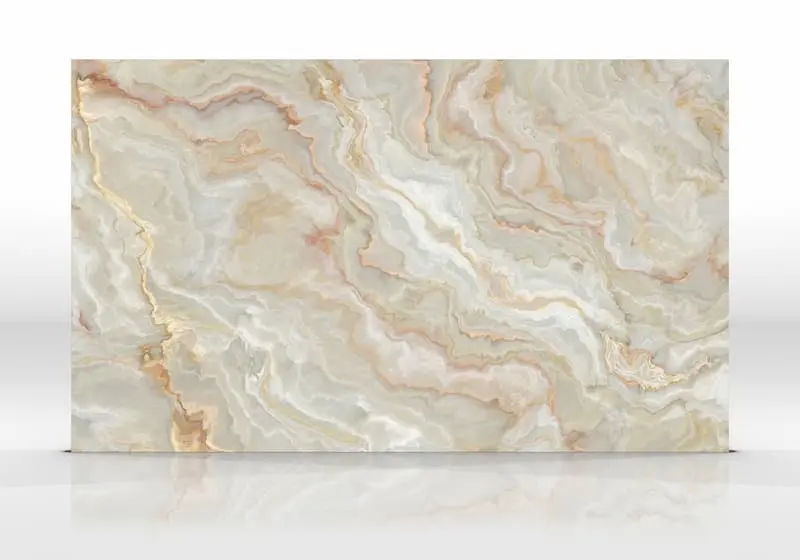Quartz counters have been the status-marking standard for homeowners for decades, and remains by far the most popular countertop material.
It’s no wonder. Engineered stone is stylish, durable, low maintenance, widely available and cost-effective compared to other upgraded countertop materials.
As beloved as quartz countertops are, recent studies are drawing an irrefutable line between engineered stone, gaps in workplace safety protections and a growing number of silicosis cases among the workers who cut, shape and polish the stones, which has prompted quartz bans and emergency safety measures to be implemented.
Silicosis is a life-altering, incurable respiratory disease, that can be fatal without proper medical intervention.
It’s important to note that there is no evidence to suggest that engineered stone, after installation, poses any health threat to homeowners, so it’s not necessary for homeowners to panic and remediate their quartz counters.
But with consumers increasingly prioritizing environmental and ethical considerations when decorating and designing their homes, these new data trends and regulatory positions may add new context to home décor decisions.
It’s a thorny issue, given the enormous popularity of quartz counters.
The issue with cutting engineered stone
Engineered stone is made by combining crushed stone (quartz), dyes, glass and resin. It contains an extremely high concentration of silica. Some estimates place silica content in the range of 95 percent in engineered stone, which is significantly more than a natural stone such as granite or marble, both of which contain of silica, but at dramatically lower levels.
In fact, silica is present everywhere. It’s a common mineral found in a host of everyday items, both natural and manufactured.
The issue is that during cutting, grinding, polishing, cutting and shaping of engineered stones to fulfil client orders, silica gets ground into a fine, toxic dust, which travels more easily and deeper into the lungs, where it causes silicosis.
When the high ratio of silica in engineered stone material combines with tools, practices and processes that exacerbate the diffusion of dust, it becomes very dangerous for the workers.
Australia bans quartz, while California introduces emergency measures
In reaction to the growing awareness of the link between engineered stone and silicosis, Australia became the first country to ban quartz outright, with measures taking effect in July 2024.
Housing goods giant IKEA proactively has started phasing out the sale of engineered stone in Australia in advance of the ban, along with some other Australian-market retailers.
U.S.-based data, including this study published in July in the Journal of the American Medical Association (JAMA), prompted the rollout of emergency measures in California, which is thought to be the epicenter of engineered stone-related silicosis in the United States.
While there have been numerous studies on silicosis and engineered stone, the key findings of this study were alarming, as it revealed that most patients were young, otherwise healthy men. The median age at diagnosis was 45, with many patients only seeking medical care when the disease was in its advanced stages, and there was a relatively high fatality rate.
The regulations released in late 2023 by the California Occupational Safety & Health Standards Board aim to simplify and increase current industry protections, including regulations around wet cutting, which can temper the diffusion of the particles with moisture, as opposed to dry cutting, which increases the likelihood of inhaling dangerous dust.
Other regulations center on ventilation, high-quality respirators to protect workers, tracking and reporting cases more accurately, and providing timely access to medical care for employees.
These emergency measures took effect at the beginning of 2024 and are intended to remain in place for a year.
There are already health and safety standards in California guiding exposure to silica, but the problem has been that it is unclear how often and how rigidly the previous standards are implemented and followed. Similarly, many stone-cutting operations are small businesses that may not have the capacity to follow these to the letter.
It’s not necessarily the engineered stone product itself that is making workers sick, which is likely why more countries have not followed Australia in banning quartz.
Australia’s ban targets engineered stone, while California is zeroing in on improving working conditions, balancing consumer demand with health and safety. This suggests that the problem is aligned with the process over the product.
“While silicosis is a serious disease, it is preventable with appropriate controls to reduce silica dust exposure. Identifying and reporting cases helps the California Department of Public Health (CDPH) understand where workers are at risk and protect worker health,” said the CDPH in a Health Advisory issued in the wake of the JAMA study in July.
While other states and global regions have yet to act officially on implementing regulations or bans, the actions of Australia and California have initiated a conversation that could spark innovation for new products and tools, or even signal a sea change in interior design, as homeowners learn more about the backstory behind their décor choices.
It also redirects the spotlight towards other material choices for homeowners, such as natural stone.








